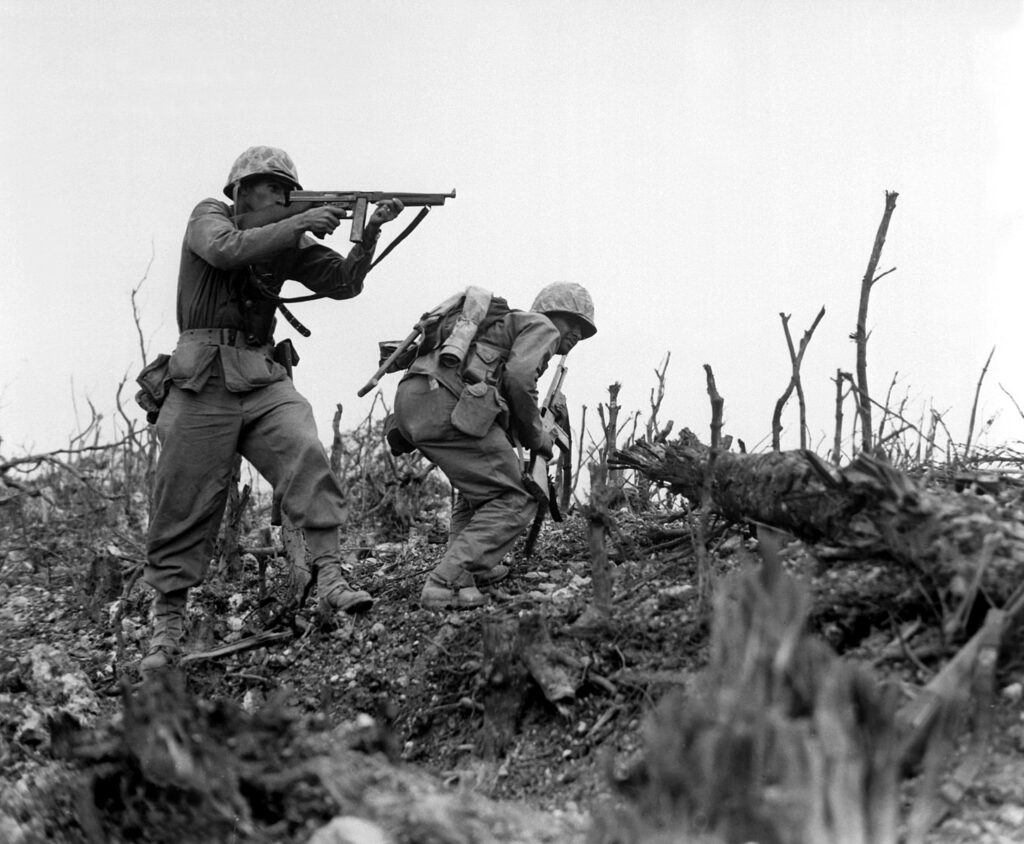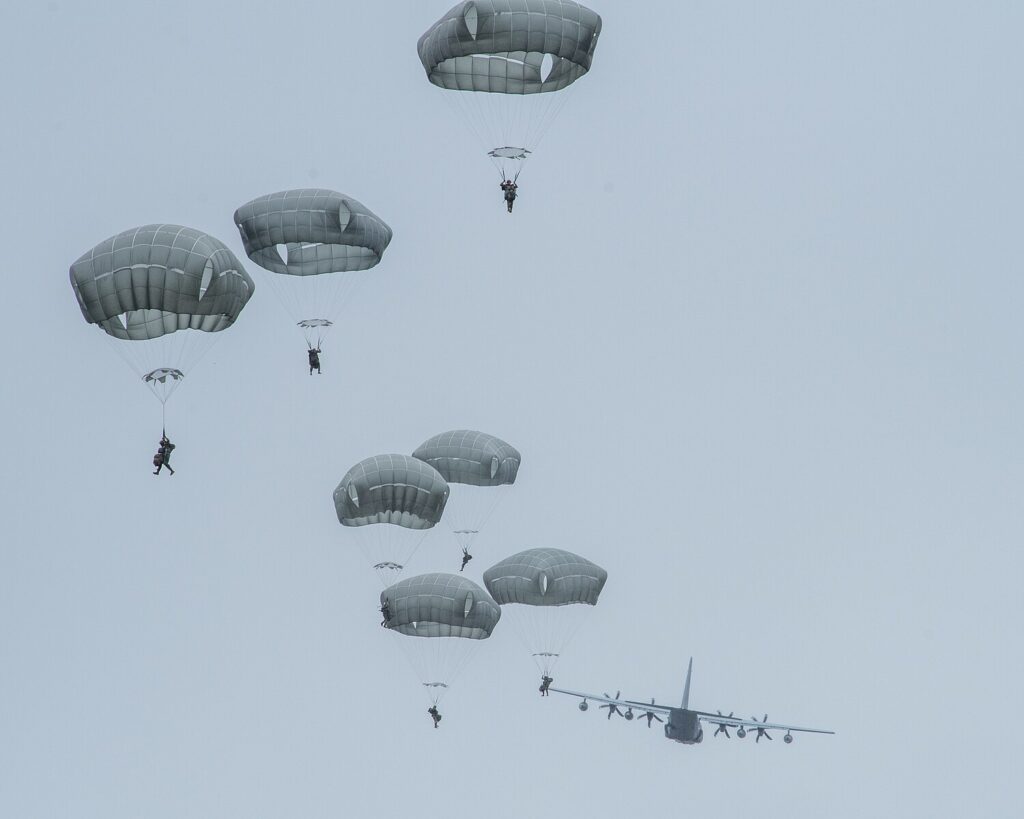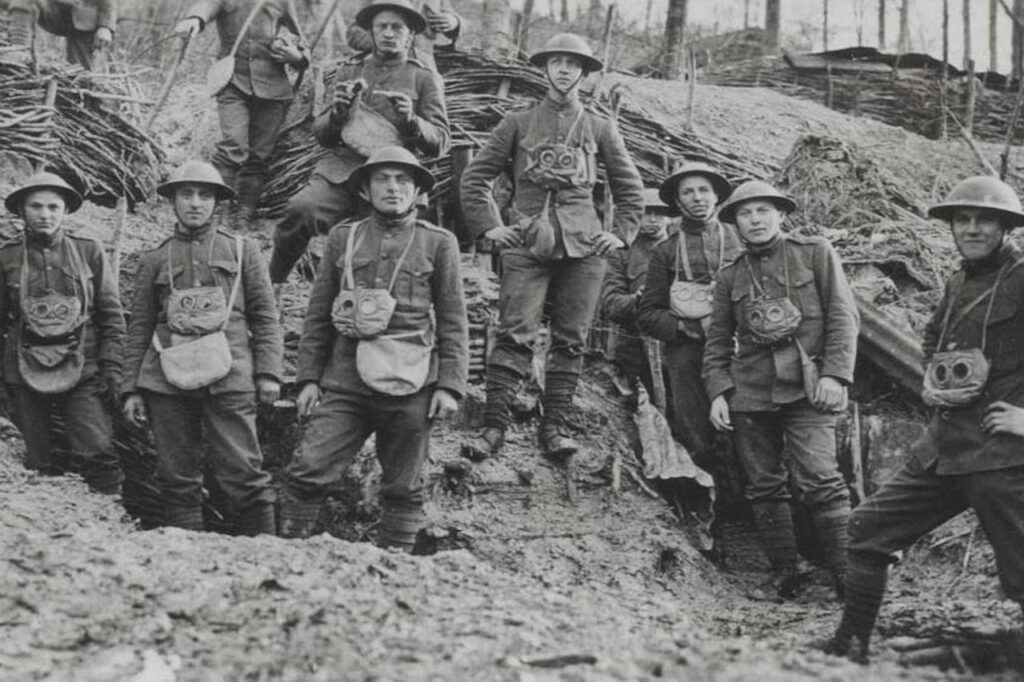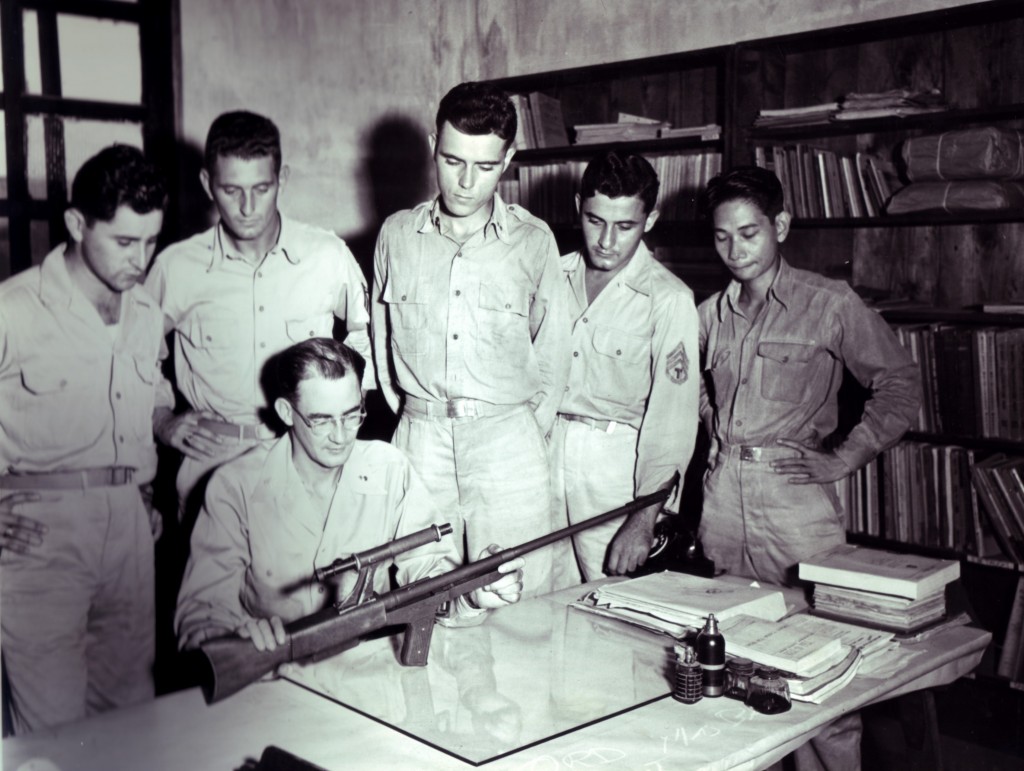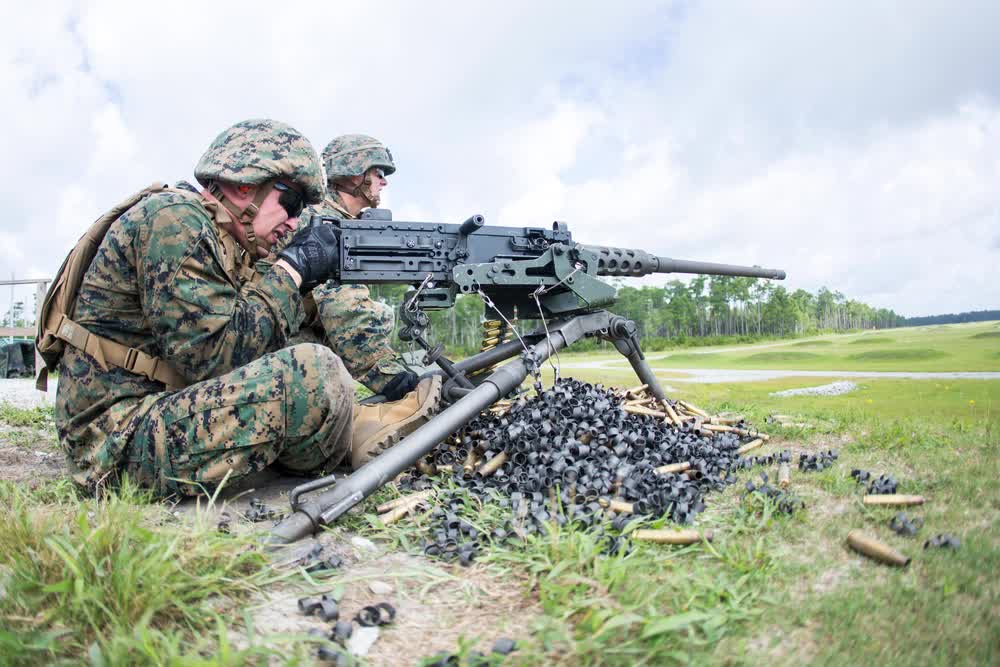The Thompson SMG has achieved what many guns never have: It’s become a household name. From Depression-era gangsters and Dust Bowl bank robbers to the Soldiers and Marines who took Normandy and Okinawa, the legendary Thompson SMG, or Tommy gun, has appeared onscreen as the weapon of soldiers, police, and crooks.
The Thompson had many variants – most of them practical – but there were also a few oddities and weirdos that are largely forgotten by most. But not by me! So, let’s look at the weirdos of the Thompson SMG family.
The BSA Thompson M1926
We’ll ease you into the weirdness. After WWI, Europeans wanted SMGs and they looked at the Thompson. The French and Belgians liked the Thompson, but they wanted it to be in 9mm. Auto-Ordnance, the creator of the gun, couldn’t produce it in 9mm, so BSA (which stands for Birmingham Small Arms and is a well-known British arms manufacturer) got a license to produce the 9mm variant.

This resulted in the M1926, which barely resembles a Thompson. BSA changed the weapon inside and out. The firing rate went from 800 to 1,200 rounds of 9mm. The M1926 only used stick magazines that held 20 rounds and blasted through them in seconds. The French trials even specifically noted that the variant’s fast firing rate made it impossible to control.
Externally, the M1926 looks… odd. BSA ditched the pistol grip for a more traditional straight rifle stock and used a different handguard. The lack of a pistol grip likely made the weapon harder to control, especially with its brutal firing rate.
It’s an odd-looking weapon and it’s easy to see how its connection to the Sten gun.
The M1923 Heavy Thompson
The M1923 Heavy Thompson was Auto-Ordance’s attempt to produce a light support weapon out of the Thompson platform. It was much lighter and smaller than the BAR and fired an entirely new cartridge. The weapon featured a bipod and longer barrel and was the first Thompson with a horizontal handguard. It weighed 12.6 pounds making it even heftier than the average Thompson.

The M1923 utilized stick magazines and chambered a cartridge known as the .45 Remington-Thompson. The original Thompson chambered the .45 ACP cartridge, which wasn’t bad but fired a heavy and slow-moving bullet reaching about 800 feet per second.
The .45 Remington-Thompson, on the other hand, threw a 250-grain projectile at a mighty 1,450 feet per second. This made the round the equivalent of a .44 Magnum – a .44 Magnum fired in fully automatic! It was absolutely beastly.
The round offered more range than your average pistol round and could certainly have more punch through light cover and similar materials. While Auto-Ordnance offered the M1923, it was never purchased and was removed from the catalogs.
Related: Embassy Marines in Vietnam fought against the Viet Cong despite their odd weapons
The Thompson Light Rifle
In the 1940s, the U.S. Army was looking to add a light rifle to its arsenal. Guns like the M1 Garand were great battle rifles but were known for being big and heavy and truck drivers, cooks, and artillerymen didn’t need such a big rifle but still needed something better than a handgun. So, the idea for a light rifle was born.
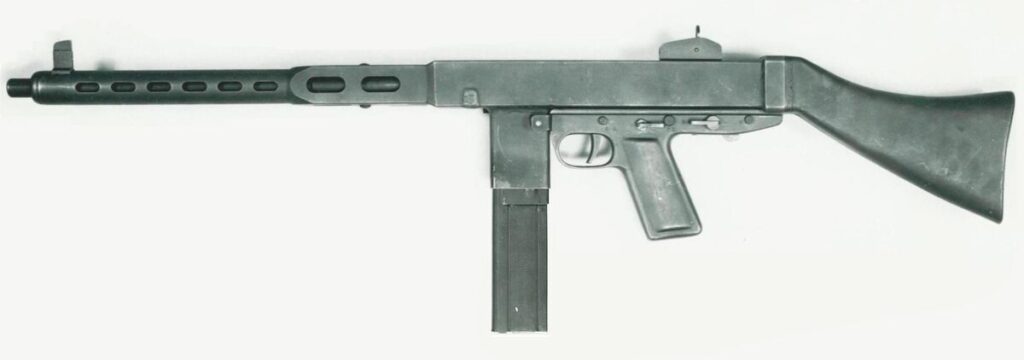
The Army’s contest to choose a weapon saw dozens of entries, including one from Thompson. The Thompson’s entry looks like a kid drew a Thompson SMG. The Light Rifle seemed to utilize the same receiver but had a different barrel and stock design and its magazine well was bigger to accommodate the .30 Carbine cartridge. Further, Thompson wrapped a slotted shroud around the variant’s 16-inch-long barrel.
The Light Rifle featured a 30-round magazine and offered both semi-auto and selective fire options. In many ways, it could be argued that Thompson almost made the first assault rifle. Yet, the Army didn’t want another Thompson, and the company’s entry wasn’t chosen. The weapon’s straight blowback action likely generated intense recoil, and the rifle was a fair bit bulkier than Winchester’s competing design that won the contest. Eventually, light rifles became a great asset to the infantry, especially airborne forces.
The Persuader
World War I saw a need for small, rapid-firing weapons, and the arms industry responded. Thompson’s answer, built in 1917, was the Persuader prototype. This was the company’s first SMG and one of the first SMGs in general.
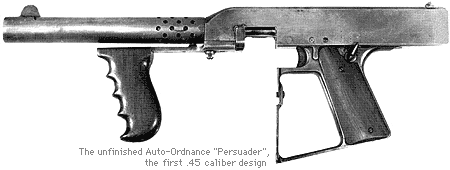
The Persuader looks like something out of the Fallout video games. It used a tape-feed mechanism, something more akin to a belt than your traditional spring-loaded magazine. The loaded tape would drop into a special magazine for protection and retainment.
Sadly, the feature that made the Thompson Persuader weird was also its fatal flaw and the Persuader’s tape feed couldn’t keep up with its rate of fire causing numerous stoppages and failures. Thus, the Persuader’s tape-feed design was abandoned. The weapon is currently at the West Point Military Museum.
Peters 45 Auto-Shot Riot Cartridge
I’ve cheated on my last entry: this isn’t a Thompson SMG, but a special ammo for the Thompson SMG. The Peters .45 Auto-Shot Riot Cartridge gave the Thompson gunner a close-range, less lethal option. This cartridge allowed you to use a standard Thompson SMG but required a special magazine.
The .45 Auto-Shot was a .45 ACP cartridge with a double crimp that held 120 pellets of #8 birdshot in a cardboard container. The round wasn’t powerful enough to cycle the action, so it created a straight pull shotgun out of the Thompson. It fired real projectiles and was an interesting approach to less lethal technology. I guess there is a reason it never became standard!
The Thompson SMG would go on to be quite successful during World War II and even after. It was a robust, well-made, and reliable weapon. Sure, it was heavy and expensive, but it’s an American cultural icon. Auto-Ordnance’s business acumen and the Thompson’s easily adjustable design led to some really weird variants along the way, and while they might not have been successful, they are most certainly interesting.
Read more from Sandboxx News
- The man who stole America’s stealth fighter secrets for China
- Lighten the load: The Army’s plan to save time by shedding excess gear
- F-35 pilot explains how an F-117 was shot down in 1999
- V-22 Osprey is facing an uncertain future despite its unique capability
- There’s no need to panic about the ‘national security threat’ announcement
